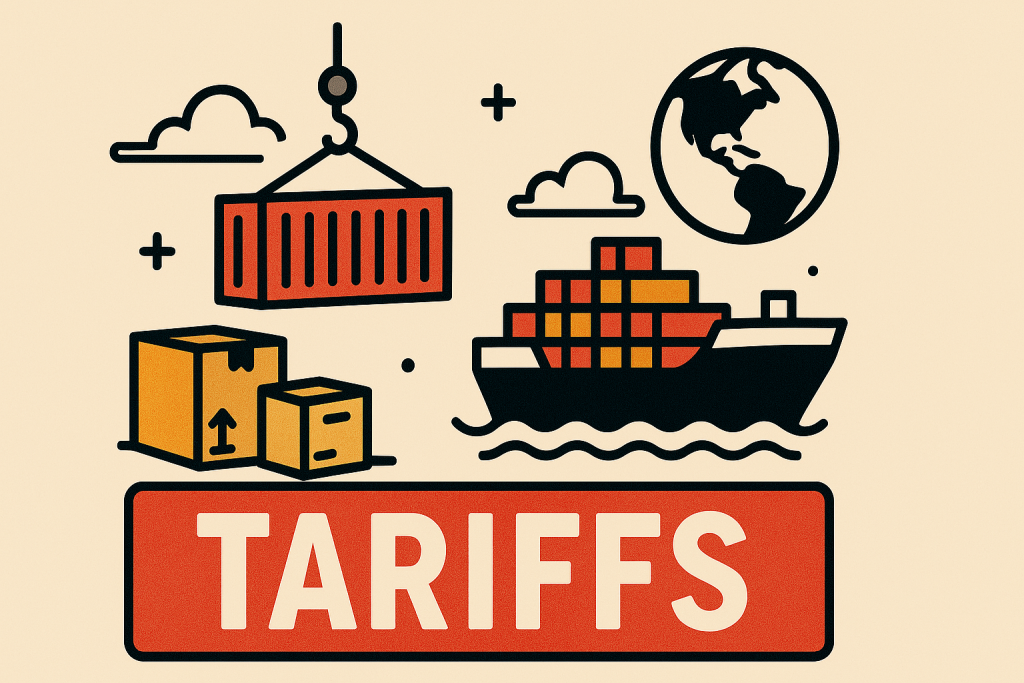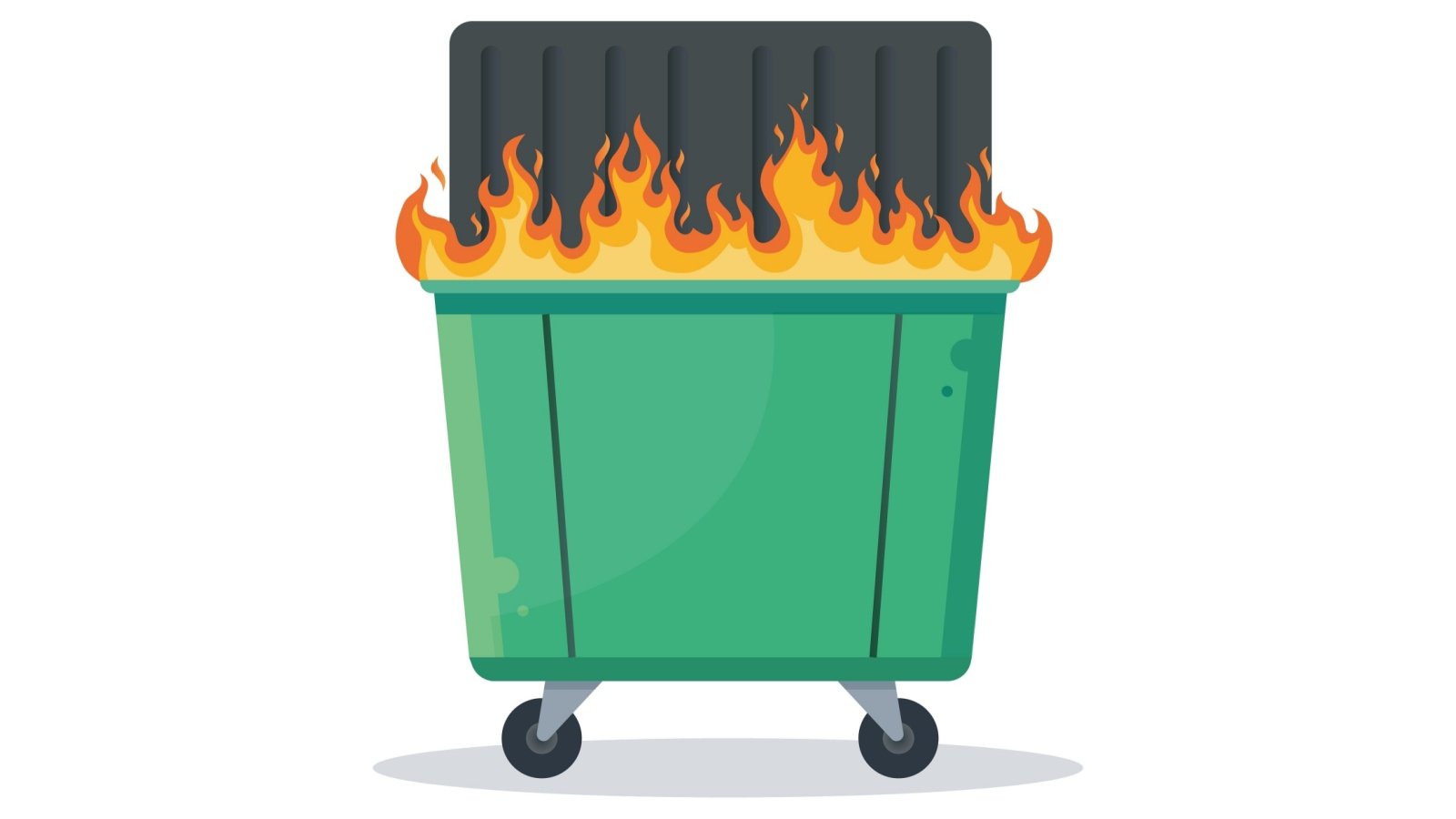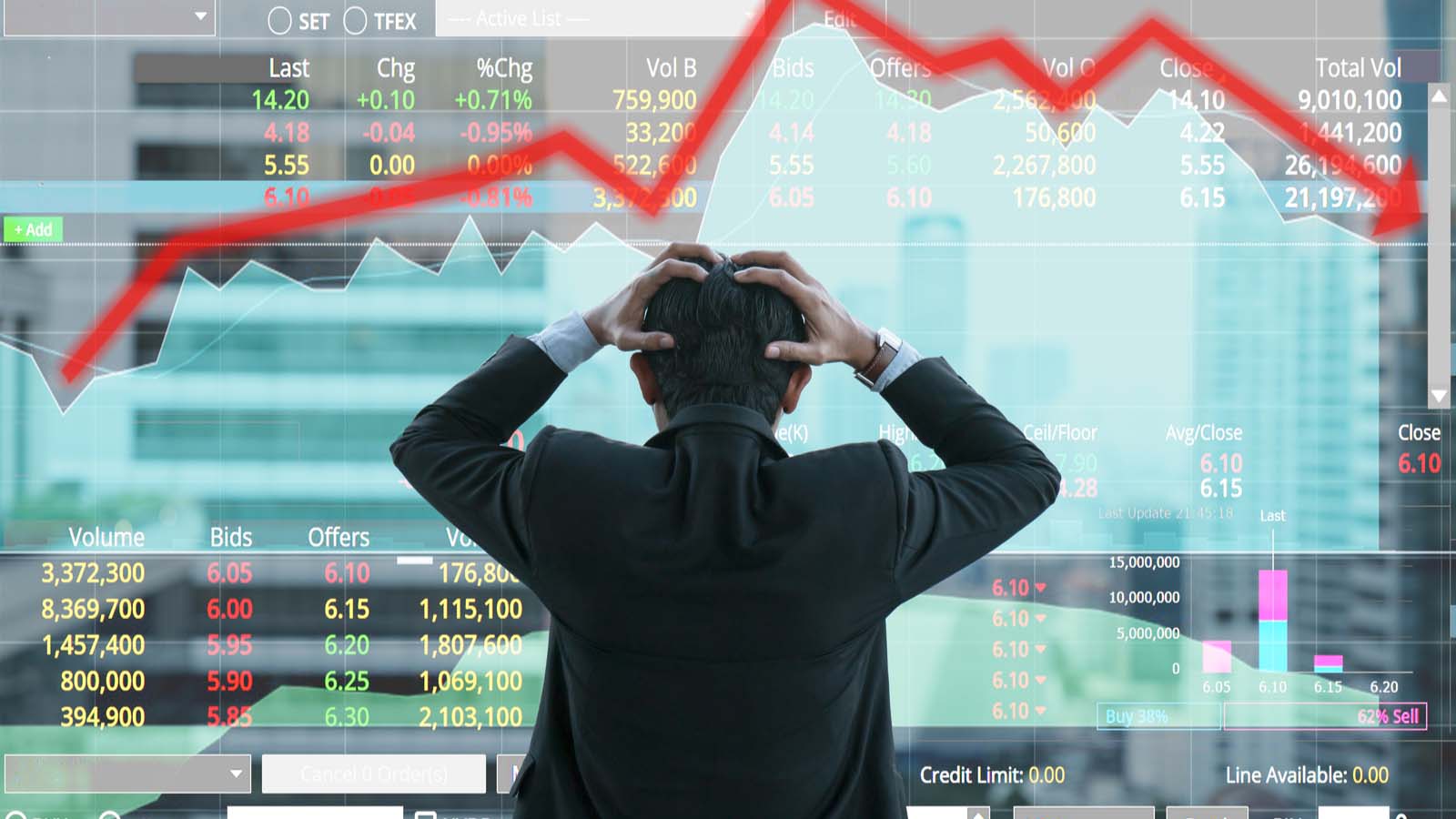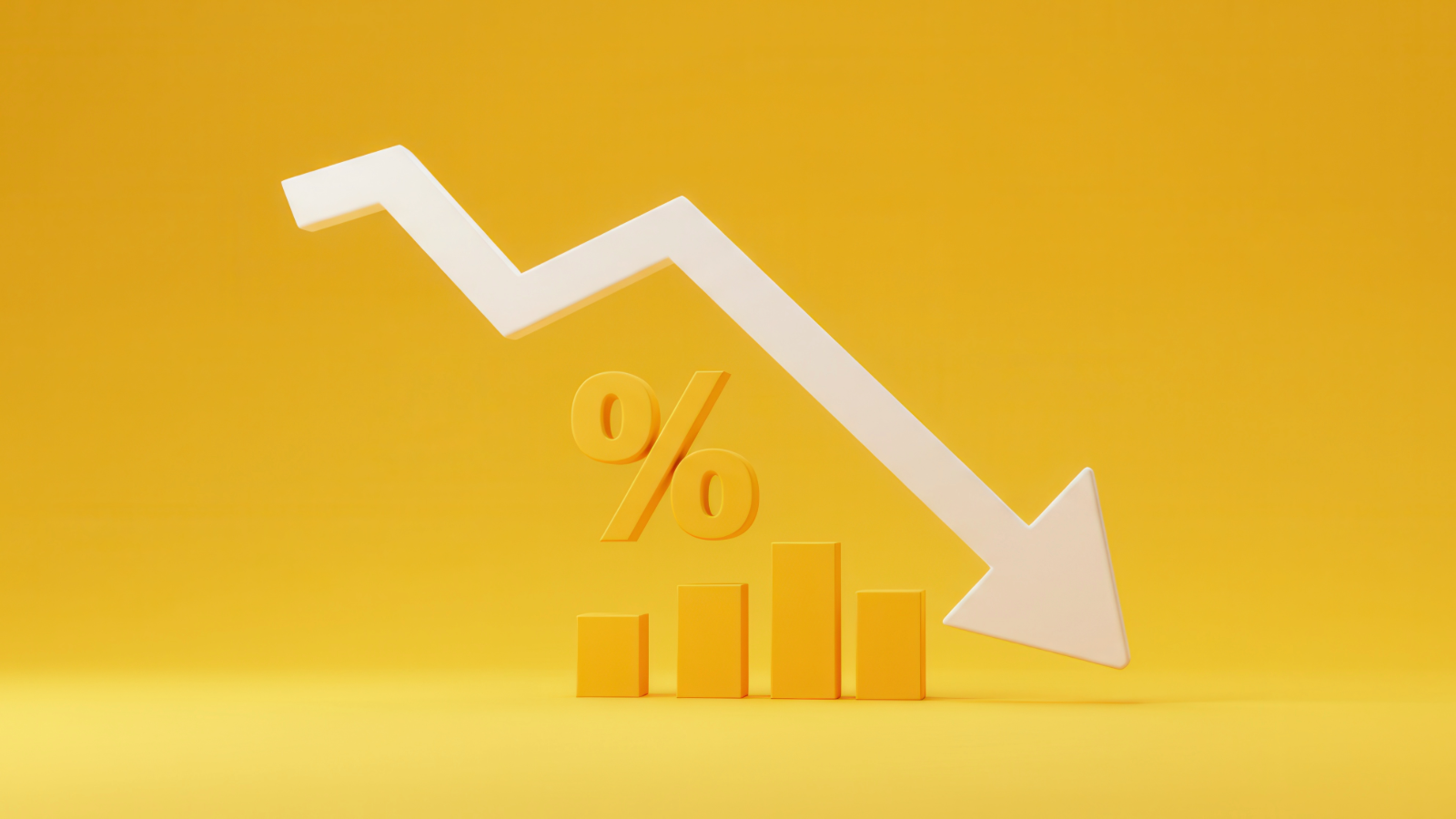Editor’s Note: Late last week, Eric sat down with Charles Sizemore, Chief Investment Strategist at our publishing partner, The Freeport Society, to discuss the Trump 2.0 tariffs and the resulting market selloff. Charles shared that video with his readers at The Freeport Navigator last Friday. And we had planned to share that conversation with you here today…
Then, this afternoon, President Donald Trump announced a 90-day pause on his new “reciprocal” tariffs for most countries. The 10% baseline tariff remains in place for all, and the tariff on China has been raised to 125%. So while the trade war isn’t over, the landscape has shifted meaningfully since Eric and Charles recorded their discussion.
Still, we believe their insights are highly relevant – and worth your time. So, we now present their conversation in full. Here’s Eric…
Hello, Reader.
Imagine your sitting down with a longtime friend.
Suddenly, they place their hand on the table, pull out a hammer, and slam it down onto their poor, unexpecting phalanges.
Ouch!
You watch them do it again… and again… and again.
At some point, you think they’ll have to stop. Surely the pain will become unbearable.
That’s exactly how it feels watching President Trump’s global tariffs play out. Simply put: It hurts.
But the hope is that, eventually, the pain will force him to stop bringing the hammer down.
Now, some folks are applauding President Trump’s new trade war as a stroke of tactical genius – a savvy game of macroeconomic “chicken” that will force the 185 countries subject to his new tariffs to buckle under the pressure and lower trade barriers.
But the stock market is issuing a very different verdict. It is judging the new tariff regime to be a massively destructive economic force – one that will cause both global commerce and economic growth to atrophy severely.
Only time will tell which assessment is correct, but history has weighed in on this topic several times already.
That is why, late last week, I sat down with my colleague Charles Sizemore, Chief Investment Strategist at our publishing partner, The Freeport Society, to discuss Trump’s “Liberation Day” tariffs. Charles is a market veteran of 20-plus years, dedicated to helping people achieve financial freedom through smart investing in this Age of Chaos.
In the video, Charles and I discuss what you should do now to not only preserve your wealth… but continue to grow it through this turmoil.
Click on the video to watch now. You can also read the full transcript below.
My advice is to stay the course and ride through this painful, gut-wrenching volatility. In fact, rather than selling into weakness, I would advise nibbling on some of your favorite positions at these lower prices.
Stock market selloffs are brutal events, but they sow the seeds of future wealth generation if you are bold enough to make some buys when most folks are selling.
Regards,
Eric Fry
Editor, Smart Money
Transcript
Charles Sizemore: Hi. This is Charles Sizemore, Chief Investment Strategist at The Freeport Society.
Do you feel liberated? We are now post-Liberation Day. We are now seeing the aftermath of the big tariff announcement that was made on Wednesday. So, to help me unpack that, what it might mean for us, and what we should do with our money as a result, I brought on Mr. Eric Fry, Editor of Fry’s Investment Report.
Eric, thanks for being on.
Eric Fry: It’s great to be here, Charles. Thanks for having me.
Charles: So, before we get started, I do want to roll out a couple of numbers because this is very relevant to our discussion. So up until very recently, Apple Inc. (AAPL), Microsoft Corp. (MSFT) – Nvidia Corp. (NVDA) came close – they were all in that mid $3 trillion market cap range, or roughly $3.5 trillion. In some cases, even a little bit higher. I want to say Apple actually touched $4 trillion for a while.
To put that in comparison, the entire current market cap of the UK market, every stock that trades in the United Kingdom, is $3.4 trillion. France also about $3.4 trillion. Germany, it’s lower, it’s about $2 trillion. Japan, it’s a little higher, about $6 trillion.
We were in a situation… And we still are, in fact. Market caps have come down a little bit, but not that much, where we had single stocks in the U.S. worth more than the entire stock market of some of our biggest trading partners.
I don’t know about you, but that doesn’t really seem sustainable to me. All things are relative. And well, I’ll let you comment on that. What does that tell you?
Eric Fry: Even before this tariff announcement yesterday (April 2) and the threat of tariffs started, I have been suggesting, starting back around probably December, January, that it was time for these big names to hand the baton to other stocks, other sectors, other markets. And I did highlight a few overseas markets.
And that was both a function of valuation and also a function of where we were and still are, to a great extent, in the investment and profit generation cycle. So, if you look at the great big names, the Mag 7 names, they had invested a ton of money a few years back. And as a group, were largely reaping the rewards of those investments – generating huge sales, fat margins, et cetera.
But now, starting last year, they were entering a new phase where, because of the need to invest spectacular sums of money to maintain an edge in AI technologies, I thought we were seeing a new phase where they were going to have to be spending a ton of money again, and not generating commensurate sales growth. And so, these highly valued companies were likely to, best case, tread water, and I thought more likely trend lower…
Charles: Before you go any further, let me just add to that. These are the finest companies arguably ever made. These are money-minting machines. They’re not immune to the laws of economics. When they have to make very large investments in their future, that is a suck on cashflow today. It affects their profitability today.
Eric: Exactly. And then you always have the law of large numbers. It’s easier to grow a $10 million company into a $20 million company than it is to grow a $3 trillion company into a $6 trillion company, simply because the sources of revenue potentially out there, the total addressable market, is not as large anymore, relative to the company itself. So, it becomes tougher and tougher.
Yeah, they’re all great companies. Most of the Mag 7 I consider great companies.
Charles: Hold on now. You can’t make a comment like that. That’s a tease. So which ones aren’t? Now you’ve got me curious. I probably agree with you, by the way, but I’m just curious where you’re going with this.
Eric: I don’t want to make any enemies here. I would say that one of them is slightly less great. That would be Tesla Inc. (TSLA), in my opinion.
Tesla is a pioneer, has been a pioneer, run by a pioneering founder, and who’s demonstrated the capability to succeed in a number of markets. Including now in satellite communications and space technology and so on.
But Tesla, as it sits today, I think is a highly vulnerable company. And so that’s all I have to say about it.
Charles: I would just add to that, I agree. Of all of the companies that make up the Mag 7, I would say they have the shallowest moats.
Eric: Exactly. That’s really what I’m saying. We agree.
Charles: Yeah.
Eric: Yeah. Overlaying all of this, there was a lot of… Call it irrational exuberance or rational exuberance, I don’t know, post the presidential election where a lot of investors thought that Trump’s presidency was going to be great for the stock market.
So, a lot of people were buying the rumor ahead of the fact. It was all through November, December, into January, investors very excitedly buying stocks. And I thought that could very well be the last hurrah for this phase of the techie component of the bull market. It was a one-decision stock market. You just buy Nvidia or a Mag 7 company and you’re good to go.
Those kinds of very narrow, robotic bull markets usually die. And so, I’ve been expecting money to fan out into other names and into other markets. I had been recommending companies in the pharmaceutical industry and many, recently, overseas stocks, overseas markets where I thought the prospects were better.
Charles: Eric, before you go any further, I do want to point out some of your bona fides here. I am very proud to say that my first introduction to you was over 20 years ago when I read the book you wrote about ADRs back when that was uncharted territory for most investors.
You’ve been actively researching international stocks for a couple decades now. You are absolutely not a Johnny-come-lately here. You’ve seen international stocks go in style, out of style, back in style again, out of style again. You’ve seen a few round trips on this.
Eric: It’s actually been 31 years since that book hit the shelves. Three decades.
And yeah, there is a cyclicality to financial markets, all financial markets.
And broadly speaking, international investing has been out of favor for close to a decade. Whereas previously, if you go back to the 2000s… or a little bit farther, into the late 1990s when we had the big dot-com bubble, technology bubble that was developing and then ended up busting in 2000…
For a decade, it was really tough to make money in the U.S. stock market, a decade after that bubble burst. And there were some pretty harrowing declines throughout not just the tech sector, but across the U.S. markets in general.
But during that period, you could have made a lot of money in a lot of overseas stock markets. And in certain sectors, metals and mining, agriculture.
Charles: Eric, I actually jotted down some numbers before we started. Let’s go to that post-2000 market.
Throughout the ’90s, what was the story? Tech, U.S. tech specifically, and the more speculative and cutting edge, the better.
We know what happened. There was a bear market that started in 2000 that bottomed out by the end of 2002, beginning of 2003. So, between the nasty bear market at the beginning of the 2000s and the nasty bear market at the end of the 2000s, there was this window of about four years, between 2003 and 2007, where the markets did well. The S&P 500 did well. Tech stocks did fine.
However, the EAFE international index, which basically includes all the major markets without the U.S., went up about 180% in that window, which was roughly double the return on the S&P 500.
Now, emerging markets did even better. They were up about 400%, and some individual emerging markets did even better than that. So, as you were saying, there are times when non-U.S. markets really beat the pants off the U.S.
Eric: Right. I mean, the Brazilian market put up a 1,000% gain in that window. I don’t know exactly the timeframe, but it was in that period. And that was both a function of dollar weakness and primarily equity strength, Brazilian equity strength.
So I have been suggesting recently that we are likely to see something that looks like a replay of the early 2000s. I mean, you can’t really tell too much from one day’s activity, but in today’s trading action, we are seeing the Brazilian ETF EWZ is up, MAXI ETF is up, there’s a number of European stocks that are up.
Charles: I might add, as we’re recording this, the S&P 500 is down about 4%. So that puts it in perspective.
Eric: Right. And I just did a quick and dirty look. There’s an index that tracks the Mag 7 stocks. That index, as of today, is down more than 20% from its late-December peak. So, it’s in correction territory. And the S&P is down about 10% over that same timeframe. So, the Mag 7 is doing way worse than the S&P.
But in that identical window, you have things like the pharmaceutical index up. Not much, but up 3%. EAFE is up 7%, the international index you were just referring to. And then the European ETF is up 12%. So again, a fairly short window, we’re only talking about four months here – not even four months.
But I think this trend is indicative of the trend I’m expecting to unfold over the next year or two or three, with a couple of gigantic caveats. And one is that analyzing economic trends, macroeconomic trends – which is where I tend to specialize – and then analyzing individual stocks to participate in those trends, is extraordinarily difficult in a Trump regime.
I’m from California. I guess it’d be like if you had a 7.1 earthquake, and it just never stopped. You’re just constantly trying to get your footing, not knowing what’s coming, what might change, how quickly it might change. So that’s not a normal investment environment.
Charles: Actually, Eric, I want to go back to that because there’s a lot to discuss there. But before we do that, I want to go back to something else you said. You had mentioned dollar weakness was one of the macro themes of that last market, roughly early 2000s to late 2000s, in that window when international stocks did so well. Dollar weakness was the norm then.
Tying that back to the tariffs, one of the stated objectives of the Trump administration in all this tariff business is they want to boost U.S. exports relative to the rest of the world. They want to bring our trade more into balance. Whether that’s a good policy or a bad policy, we can talk about that at a different time, but that is their objective. Their objective is basically to balance our trade deficit.
Well, one of the easiest ways to do that is to revalue the currency. That’s one of the oldest tricks in the book. If you want to export more, you make your currency cheaper. That’s not necessarily good for the consumers in that market, of course, because everything they buy becomes more expensive. But that’s the game, right?
And so coming back to under what conditions do foreign stocks tend to outperform, if dollar weakness is part of that, then I think we are very likely to see that going forward. The dollar’s been very strong lately, partly because it’s been viewed historically as a haven. But if you do have an administration that’s stated objective is to boost export competitiveness, then they will lower the value of the dollar. That is almost a given.
Eric: Yeah, I think you’re right about that. One problem with using tariffs to achieve that goal is that tariffs tend to shrink the absolute pie. Even if your percentage of exports goes up, the total volume of export activity could drop significantly.
So, tariffs are a very, very blunt instrument, which is why we haven’t used them for a hundred years. It’s a little bit like if I went outside right now and I saw some bird poop on my car, and I thought, “Well, gee, I want to get that off. I’m just going to drive it off of a pier into the water, then I’ll get rid of that bird poop on my car.”
I would accomplish my goal, but my car would be under water.
Charles: At what cost, right?
Eric: And if you look at the history of tariffs of this size, we have to go back a hundred years. The last three times that we had things like this was 1890, 1897, and 1930.
Charles: And there was a common theme of what followed after each one of those events.
Eric: I took a look at it again yesterday. During the first six years of those tariff regimes, the first one, the stock market fell 24% over those six years. The next one, stock market fell half a percent. That means it went nowhere for six years. And the last one, it fell 42% over six years, after first falling 70%. That was during the Great Depression. And then you had the Panic of 1893 following one of them, which was like a great depression before the Great Depression.
It’s just a sticky wicket to try to use a broad-brush tariff policy. And one huge problem with it is… Okay, we can sit here and we can say it’s unfair. These trade partners, they’re unfair. But these unfair trading patterns and supply chains took years, if not decades, to develop, right? It’s not easy to just move some production facility from here to there and then have the supply chains that feed it and so on. It takes a really, really long time.
Charles: And by the way, Eric, going back to another one of your points, you said that one of the problems with investing or forecasting in the Trump years is things change quickly.
So if you are thinking, “Okay, this is a new regime, I’m going to move my production to California, to Florida, to Texas,” to wherever, you’re not going to do it instantly. Even if you could move it instantly, you’re not going to because you’re going to wait and see if the policy changes next week. You’re going to be conservative. You’re going to bide your time.
Eric: There are literally companies in the stock market today, and they will suffer, who moved production from China to Vietnam under the last Trump administration to become more U.S.-friendly, to not be producing in China.
And now today you’ve got these sky-high tariffs on Vietnam. And in some of these industries, we can talk about it all we want. Oh, we got to bring them home. Well, we probably don’t want to bring home a lot of textile production. It’s massively water-intensive, it’s dirty. I mean, do we want to be doing it here? I don’t know. Probably not.
Charles: I don’t imagine a world in which my kids are stooped over a loom making textiles.
Eric: All I’m saying is that there are some businesses that – yes, we can do them, but maybe we don’t really want to as a nation. There’s many, many, many that we do and we would love to have come back here. And that trend has already been underway. We’ve been reshoring industries at a very rapid clip for about six years. So that started at the end of the Trump administration, continued at the same trajectory through the Biden administration, and is continuing today. That trend has already been in place. And I think we should be encouraging it, for sure, but I don’t think this is the way to do it.
Charles: There are more subtle ways and more gradual ways. You can use the carrot instead of using the stick. And we were doing all that, by the way. As you said, the trend was already in place. It seemed like a really unnecessary escalation that’s going to backfire.
Eric: Yeah. It ends up being just a scary time now. Now what? And as I said before, because of how quickly things change, it is hard to really handicap using traditional investment analysis. You have to make a lot of guesses about what a non-traditional politician and a non-traditional economic policy is going to look like tomorrow.
So having said that, I’ve just been maintaining course and speed by fanning out into the foreign markets and individual sectors of the U.S. economy that stand the best chance of performing well, no matter what comes.
And today on my screen of recommendations that I track every day, it’s pretty red. And the only exceptions out there are a few in the pharmaceutical area that are up today, and a few foreign stocks that are up today. But most of the rest are… There’s not really a place to hide.
Charles: Well, so let’s talk about that and we can bring this full circle.
What is your advice to investors today? What do we want anybody viewing this to take away? What do they need to do when they get back to their desk or get back to their phone to start buying or selling?
Eric: It’s always this way in the stock market. And people always want to know. How do I hedge? How do I protect myself? What do I do? And there aren’t a lot of answers.
Investing is pretty binary. You’re either in stocks or you’re not. And if you’re not in stocks, you’re in some other asset. And the range of assets that are not correlated with stocks is pretty low. That list is short.
There’s cash which is directly not correlated. It’s inversely correlated, to the extent that a stock falls, your cash is worth more money. So that’s the only one, literally, that is a direct hedge.
Gold is often a hedge, but it’s not perfect, and gold stocks even less so because they’re stocks. Real estate, also a hedge. Not perfect. Real estate often falls in a severe recession, just like stocks do.
Charles: As my professor said back in undergraduate finance, the only perfect hedge is in an English garden. You’re never going to be able to perfectly hedge yourself, but protection is still protection.
Eric: Exactly right. I don’t sugarcoat it. If you’re scared, there is only one true option. That’s to go to cash.
I think that there are middling options, and that’s what I’ve been talking about. There are things on my screen today that are green, and I’ve been advocating buying mostly those kinds of names over the last six months because of my sense that the U.S. stock market was pretty fully valued and that you weren’t going to make a killing there. Best case, probably go sideways. Worst case is what we’re seeing now.
So, I think you can safely-ish continue investing in select opportunities overseas and then in two or three of the sectors in the U.S. market. But I’ve had recommendations in the oil and gas industry for the last year and a half that have been doing fantastically well, and today they’re getting annihilated because of the fear that recession is going to destroy demand for oil and gas.
Charles: You use the R word. I would say at this point it does look like the market is pricing in a recession. And we’ve seen some evidence.
The Atlanta Fed’s GDPNow is forecasting the economy is going to shrink by about 4% when they release the first quarter numbers in the coming weeks. Second quarter, I don’t even want to know. So that’s where we are.
Eric: But again, this all could go away literally in a week. I don’t think it will entirely, but I think a lot of it could go away.
It’s like watching someone hit their hand with a hammer. You watch it and you think, “Well, gee, it’s got to hurt. They’re probably going to stop at some point, right?” And they just keep hitting their hand over and over and over again. That’s how it feels watching this global tariff policy play out over the last 30 days, is that it hurts. And at some point, you would think that there’s enough pain that the message might percolate up into the White House and they might modify the policy.
I would point out a little historical curiosity. The president doesn’t actually have the constitutional power to enact tariffs. That’s a congressional power. But that’s so a hundred years ago.
Charles: That’s funny. You’re one of the only people I know that has actually made that point. I’ve made it privately, but the president can make tariffs in the case of national emergency. There are limited scenarios in which the president has the authority to levy tariffs. It’s really a stretch. The president does not have the authority to just arbitrarily rewrite trade policy though, and I don’t really see anybody stopping that problem.
Eric: Yeah. I mean, this is one of those things that we’ll be discussing in political science classes years from now. This isn’t the only power that the executive in power now is claiming. It’s a different time. So, for better or worse.
Charles: It is indeed.
Well, let’s wrap this up. To summarize for our viewers… Look, U.S. stocks are still some of the best companies in the world, I would say the best companies in the world, but the best companies aren’t necessarily the best stocks or the best investments in any given window.
And what we’ve seen today, the conditions seem to be lining up, and we could have a repeat of what we saw in the 2000s where the American companies didn’t stop being great, they didn’t stop being the best in the world, but they were distinctly out of favor for several years relative to large pockets of the world. That was, of course, aided by a weaker dollar during that period. All of those conditions lined up to create that environment.
It looks like we may be in a similar environment today, which doesn’t mean you should dump all U.S. stocks and hide under a rock, but it does mean you should really strongly consider diversifying. You should look overseas. You should definitely cast your net wider.
Eric: I emphatically agree, Charles. I mean, there were long periods of time when companies like Amazon.com (AMZN), Netflix Inc. (NFLX), and others were fantastic companies, operating brilliantly on the ground, at ground level, but their stocks were bad for a while. Right? It happens. So, there’s a disconnect between what happens on the ground and in the stock market sometimes, over long periods of time. It just depends.
Charles: Exactly.
Well, Eric, thanks for being on today. This was great. It’s nice to get some fresh perspective. We’re definitely giving the viewers information they’re really not going to get elsewhere, or at least if they get this information elsewhere, it might be two or three years from now. They heard it from us first.
Eric: Right.
Charles: Thanks for being on, and I hope to have you on again soon.
Eric: Thanks a lot. Appreciate it. Take care.
Charles: And to everybody viewing, thanks for tuning in today.
This is Charles Sizemore signing off.
To life, liberty, and the pursuit of wealth.

















